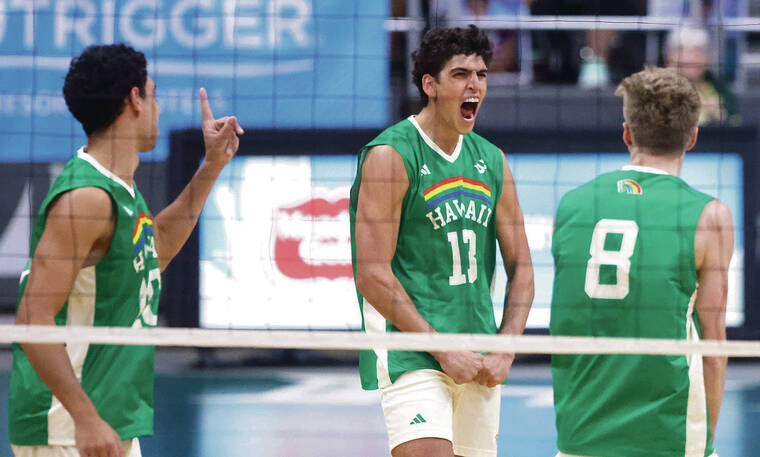Hawaii
The paradise islands that don't want to be Hawaii
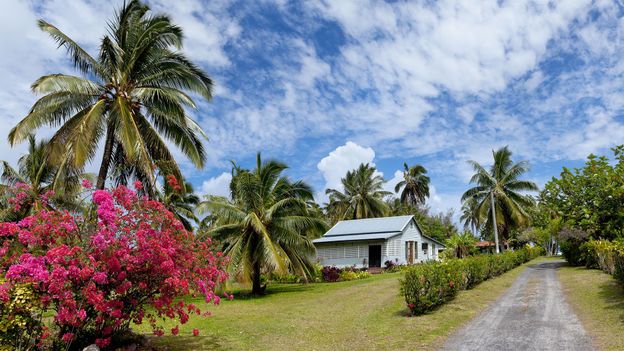
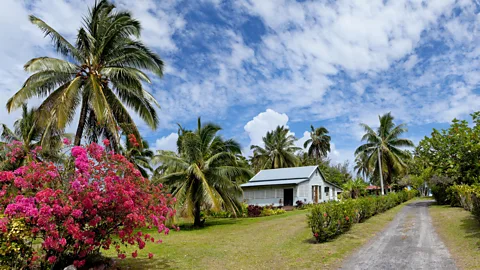 Getty Images
Getty ImagesThe Cook Islands is proving that sustainable tourism isn’t just possible – it’s essential. Here’s how this South Pacific nation is preserving their paradise for generations for come.
Landing on Rarotonga, the largest of the Cook Islands chain felt like stepping back in time. Gazing out of the taxi from Rarotonga airport to our resort, we were immediately struck by the absence of high-rise hotels, fast-food restaurants and corporate chains. There were no traffic lights, only coconut palms lining the road, the scent of salt and frangipani drifting through the air and the jungle meeting the ocean in a seamless panorama. It felt like Hawaii in the 1960s: uncrowded, laid-back and refreshingly authentic.
Our taxi driver pointed to a low-slung resort along the shoreline. “No building can be higher than a coconut tree,” she said. This isn’t just a local tradition but a law set in 1965 by the Cook Islands’ first premier, Albert Henry, to prevent overdevelopment. She explained that only Cook Islanders can own land, ensuring that large corporations don’t dominate the landscape. We looked out onto hotels blending naturally into their surroundings and white-sand beaches ringed with long green parks, all free from litter and crowds.
We soon learned that this preservation of paradise is deeply intentional. Cook Islanders have made a conscious effort to ensure that Rarotonga never follows the path of overdevelopment seen in places like Honolulu. Instead, locals have committed to conservation, low-impact tourism and sustainable practices that benefit both locals and visitors. “People come here because it is a paradise uncluttered by overdevelopment,” explained Jeremy Goodwin, regenerative tourism manager for the Cook Islands Tourism Corporation (CITC). “Our sacred duty as custodians of the land is to look after our paradise.”
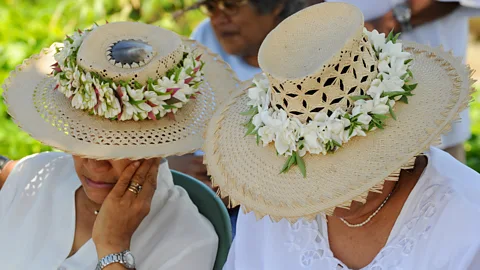 Getty Images
Getty ImagesThe Cook Islands, an archipelago of 15 islands between New Zealand and Hawaii, has been self-governing in free association with New Zealand since 1965. With a total population of 21,000, the islands are divided into two groups: the Southern Cook Islands, which includes the more accessible Rarotonga and Aitutaki, and the remote Northern Cook Islands, made up of low-lying coral atolls. Cook Islanders have their own Māori language, with different dialects across the islands. And while tourism is a key industry, the islanders have ensured that sustainability remains at the nation’s core.
“For hundreds of years, the protection of the Cook Islands relied on the traditional Ra’ui System where access to a particular resource or area is forbidden for a given period,” explained Karla Eggelton, CEO of CITC. “The system aims to conserve food resources and protect ecological conditions in lagoons, reefs and other marine resources.”
Thoughtul Travel
Green Getaways is a BBC Travel series that helps travellers experience a greener, cleaner approach to getting out and seeing the world.
This philosophy persists today – and extends beyond the sea. On the northern island of Pukapuka, for example, locals have practiced sustainable living for centuries, packing up their belongings and sailing by boat to another atoll within the lagoon for seasonal periods to prevent resource depletion. They fish and farm only what they need, maintaining a delicate balance with nature.
On arrival at The Rarotongan Beach Resort and Lagoonarium, staff welcomed us with a warm “Kia Orana”, a greeting that translates to “may you live long”. It’s a unique gesture of friendship from islanders renowned for their hospitality and warmth. The resort overlooks the Aroa Lagoonarium, a snorkelling haven and a sanctuary for butterflyfish, parrotfish and angelfish. Part natural lagoon and part enclosed habitat, it is designed to support marine conservation, serving both as a coral nursery and a protected area for marine life to flourish.
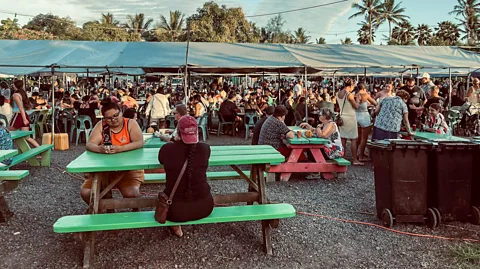 Pamela and Gary Baker
Pamela and Gary BakerAs the days passed, we saw how sustainability is woven into everyday life across the islands. At the Muri Night Market, a popular outdoor dinner option, we watched vendors prepare island dishes like ika mata (raw fish marinated in lime and coconut milk) and rukau rukau (taro leaves in coconut cream), all using local ingredients. We were struck by the market’s Rent-a-Plate project, where visitors can borrow reusable plates and cutlery instead of using disposable plastic. Cook Islanders also promote clean water initiatives. We purchased reusable bottles from the visitor’s centre and refilled them at free UV-treated water stations around the island, a project led by the Te Ipukarea Society to minimise plastic waste.
How to play your part
1. Support the Cook Islands economy by buying local crafts, clothing and food. Attend a cultural tour or show and embrace the traditions, customs and lifestyle.
2. Take shorter showers to save the islands’ limited water supply and minimise electricity use.
3. Volunteer with Muri Environment Care Group. Every Wednesday and Thursday, visitors can join efforts to protect Muri Lagoon by participating in soil restoration projects and planting native trees near streams to control sediment flow into the lagoon.
4. Choose eco-friendly experiences and products, use reef-safe sunscreen and avoid single-use plastics.
Beyond sustainable dining, Cook Islanders have taken marine conservation to a global scale. In 2017, the country established the Marae Moana Marine Park, making the 15 islands the world’s largest multi-use marine protected area, covering 1.9 million square kilometres. The legislation also bans large-scale commercial fishing and seabed mining within 50 nautical miles of each island.
“Marae Moana is the idea of shared space, a new concept of creating a sanctuary and the conservation effort that allows for shared, sustainable activity,” said Eggelton.
Also offering opportunities for sustainable tourism is Aitutaki, a bucolic island neighbouring Rarotonga that’s known for its snow-white sand beaches, volcanic rock, coconut palms and crystal-clear lagoons. Here the Pacific Resort Aitutaki has launched a coral restoration project where guests can take part by affixing coral fragments to underwater mesh tables, helping regenerate the reef.
“The project is an example of Mana Tiaki or island conservation,” explains Goodwin. “Mana Tiaki means guardianship with a sacred purpose.” He explained that culturally, for most Polynesians, the ocean is sacrosanct. “The beaches bring tourists to this holiday destination, but they also connect Cook Islanders to the ocean.”
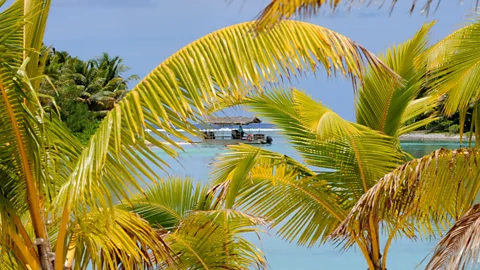 Getty Images
Getty ImagesAs the days passed, we explored the endless powdery white-sand beaches that ring Rarotonga, from Aroa Beach where fiery, colourful sunsets painted the sky with hues of vivid orange and crimson to serene and scenic Titikaveka Beach. They were all pristine and uncrowded, lined by palm trees, parkways and picnic tables. Most were unobstructed, with no commercial buildings to obstruct the view.
At Muri Beach, we opted for a sea turtle snorkelling tour. Our guide, Eric, explained the importance of turtles to the Cook Islands economically, environmentally and culturally. Daily tour operators earn an income by taking paying passengers to see these graceful, curious creatures. Plus, sea turtles are a key indicator of coastal ecosystem health, so monitoring and preservation are vital. Eric told us about a rescuer who found a turtle caught in a fishing net. Once freed, the Te Ara O Te Onu (Cook Island Sea Turtle Society) rehabilitated the turtle, as they have done dozens of times in the past. In addition to the society’s efforts, visitors are encouraged to help track turtle movement through the Citizen Science Project by taking photos and sending them into the programme.
By the time our trip had come to an end, we better understood how Cook Islanders have created a blueprint for preserving paradise by blending ancient conservation methods with modern environmental initiatives. “It’s about leaving both the people and the place better off than you found it,” said Eggelton.
Goodwin echoed the sentiment: This is our little paradise; if we all look after it, she will look after us.”

Hawaii
Hawaii gets back into action against No. 11 UC San Diego | Honolulu Star-Advertiser
Hawaii
Hannemann Resigns As Chair Of Hawaiʻi Tourism Authority Amid Freebie Inquiry

Tourism executive and former Honolulu Mayor Mufi Hannemann resigned as chair of the Hawaiʻi Tourism Authority Thursday after questions were raised over possible inappropriate use of HTA resources by two nonprofits he leads.
Hannemann told the board shortly before noon that “the best thing for me to do is to step down as chair, and then I will have to think whether I want to stay on the board, because the reputations of those incredible, important organizations have been put into question.”
The HTA board then elected boad member Todd Apo as its new chair.
HTA board members on Tuesday questioned Hannemann at length about the Hawaiʻi Lodging and Tourism Association’s public safety conference at the Hawaiʻi Convention Center on Dec. 6, 2023, and a meeting of the Pacific Century Fellows at the convention center on May 15 of last year.
Hannemann is president and CEO of the Hawaiʻi Lodging and Tourism Association, which advocates for the hotel and tourism industries. He is also founder of the Pacific Century Fellows program, a nonprofit leadership training organization.
Jimmy Tokioka, director of the state Department of Business, Economic Development and Tourism, has said the ethics commission has begun interviewing people as part of an inquiry into more than $14,000 in food and beverages provided for the two events. Tokioka is also an HTA board member.
Tokioka said in an interview that HTA documents show HLTA and Pacific Century were supposed to pay for breakfasts served at those events that cost more than $14,000, but there was no record of payment.
Hannemann announced his resignation after the board discussed those gatherings for the second time this week. He suggested the HTA board should instead be focusing on Hawaiʻi’s visitor industry.
“People watching from everywhere will say, ‘Can’t those guys get on with the business of tourism?’” Hannemann said. “‘Can’t they get on with the business of making sure there’s funding? Can’t they get on with the business of making sure that the staff that works there is appreciated?’”
It’s the second major shakeup in HTA leadership in a week.
The Honolulu Star-Advertiser reported March 20 that HTA had appointed Caroline Anderson its new interim president and CEO following the resignation of interim top leader Daniel Naho’opi’i, who had been in the role for a year and a half.
“Naho’opi’i, who ends his tenure Friday at HTA, had been the agency’s 11th top leader since the state Legislature created the HTA in 1998,” according to the article.

Sign up for our FREE morning newsletter and face each day more informed.
Hawaii
20th Century/Disney Acquires Martin Scorsese’s Hawaii-Set Crime Epic — World of Reel

We have no idea what Martin Scorsese’s next film will be, but at least there’s some movement with one of his percolating projects in development.
Disney/20th Century has acquired the rights to Scorese’s upcoming Hawaii-set crime epic starring Dwayne Johnson, Leonardo DiCaprio and Emily Blunt. Still no word on when this one will start production.
The thumbnail description (via Deadline):
Imagine Robert De Niro’s Goodfellas’ Jimmy the Gent character, but as a ruthless Hawaiian crime boss, also based on a real figure, who battled encroaching rivals for control of organized crime in Hawaii.
For a moment there, it did look as though Scorsese’s ‘Irishman’ backer Netflix had the edge in acquiring the Hawaii-set project, some of the other higher bidders included Amazon and Apple, with Warner Bros. With $200M above-the-line expenses on this movie, it does look like 20th Century is ready to take the hit.
Set in the ‘60s and ‘70s, Scorsese’s film is said to follow an aspiring mob boss (Johnson) who fights rival crime factions for control of the underworld of the Hawaiian islands. Scorsese has hired Vanity Fair journalist, and doc filmmaker, Nick Bilton to write the screenplay.
Last we checked, the script hadn’t been completed yet, and DiCaprio is going to be busy this summer shooting Damien Chazelle’s next film. He then has promo to do on Paul Thomas Anderson’s “One Battle After Another” in September. Scorsese can still, technically, shoot one of his other percolating projects this year, but definitely not “Devil in the White City” or “Sinatra” which are both supposed to star DiCaprio.
So, with the knowledge of DiCaprio’s busy schedule, which will include Chazelle’s film and promotion of Paul Thomas Anderson’s fall-tipped “One Battle After Another,” what’s Scorsese’s next film going to be? I’m still banking on the smaller-scaled Marillyne Robinson adaptation “Home” to shoot sometime this year.
-

 News1 week ago
News1 week agoTrump Administration Ends Tracking of Kidnapped Ukrainian Children in Russia
-

 World1 week ago
World1 week agoCommission warns Alphabet and Apple they're breaking EU digital rules
-

 News1 week ago
News1 week agoTrump’s Ending of Hunter Biden’s Security Detail Raises Questions About Who Gets Protection
-

 News1 week ago
News1 week agoZelenskyy says he plans to discuss Ukraine ceasefire violations in a call with Trump
-

 Culture1 week ago
Culture1 week agoJack Draper’s tennis: How embracing variety took him to Indian Wells title
-

 World1 week ago
World1 week agoNASA astronauts return to Earth after 9 months: How space changes the body
-

 Technology1 week ago
Technology1 week agoGoogle’s Pixel Tablet is $120 off ahead of Amazon’s spring sales event
-

 Technology1 week ago
Technology1 week agoStreaming services keep getting more expensive: all the latest price increases






